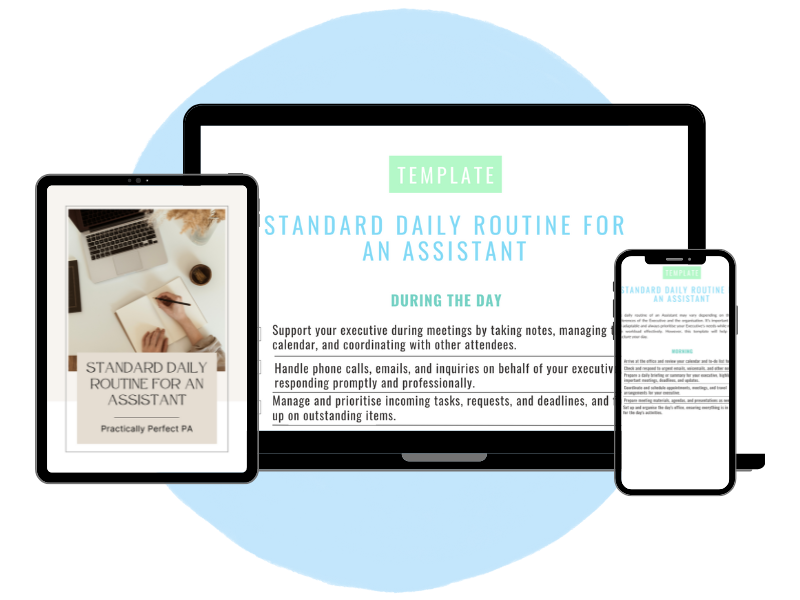Boost Your Productivity with the ABCDE Method
If you’re looking to supercharge your productivity and make a significant impact in your role, the ABCDE method is a great tool. This simple yet powerful technique will help you prioritise tasks effectively, ensuring you focus on what truly matters. Let’s look at how to boost your productivity with the ABCDE method and transform your workday.
Why prioritisation matters
We all know the feeling of a never-ending to-do list. However, not all tasks are created equal. Understanding the difference between urgent and important tasks is crucial for Assistants to prioritise not just their work but also managing emails, schedules and tasks for their Executive. Urgent tasks need immediate attention, like responding to an email from your Executive. Important tasks contribute to long-term goals, like planning a strategic meeting. By prioritising effectively, you can ensure that the essential tasks aren’t overshadowed by the urgent but less critical ones.
The ABCDE method
The ABCDE method is a brilliant and simple way to categorise and prioritise your tasks, ensuring that you focus your energy where it’s needed most.
A – Must Dos
These are critical tasks that have serious consequences if not completed. Think of them as your top priority. For example, preparing for a high-stakes board meeting or ensuring a crucial report is ready for your exec.
B – Should Dos
These tasks are important but have minor consequences if delayed. They should be done but aren’t as time-sensitive. An example could be reviewing weekly reports or updating a project timeline.
C – Nice to Dos
Tasks in this category have no significant consequences if left undone. They’re nice to complete but not essential. Attending a networking event or organising your desk could fall into this category.
D – Delegate
These are tasks that can be assigned to others. Delegation is a powerful tool for freeing up time for more critical activities. Routine data entry or scheduling meetings are tasks that might be better handled by someone else.
E – Eliminate
Time-wasters that do not bring any real benefit should be eliminated. Unnecessary meetings or over-checking your email can often fall into this category.
Applying the ABCDE method
- List Your Tasks: Start by listing all the tasks you need to complete. Don’t worry about the order just yet.
- Categorise: Assign each task a letter from A to E based on its importance and urgency.
- Prioritise: Focus on completing the A tasks first, then move on to B, and so on. This ensures that your most critical tasks are always addressed first.
- Delegate and Eliminate: Don’t be afraid to delegate D tasks and eliminate E tasks. This will significantly streamline your workflow.
Examples of how to use the ABCDE Method
Scenario 1: Preparing for a Quarterly Review
- A Task: Create and finalise the presentation for your Executive
- B Task: Collect feedback from team members about their quarterly performance.
- C Task: Organise team-building activities post-review.
- D Task: Delegate data collection to a junior assistant.
- E Task: Skip the meeting about office party planning.
Scenario 2: Daily Office Management
- A Task: Ensure all travel arrangements for the exec are confirmed.
- B Task: Update the project management software with the latest milestones.
- C Task: Plan the monthly office lunch.
- D Task: Assign the task of ordering office supplies to an intern.
- E Task: Avoid spending time scrolling on unnecessary social media.
Making the ABCDE Method a habit
To truly reap the benefits of the ABCDE method, make it a daily habit. Review and categorise your tasks each morning or the night before. Stay disciplined about focusing on A tasks first, and don’t fall into the trap of tackling easier, less important tasks just to check them off your list.
Remember, prioritisation is about managing your time, energy, and focus. By using the ABCDE method, you’ll boost your productivity and enhance your overall job satisfaction. If you would like to learn more about Productivity and Time Management, check out our online course designed specifically for Assistants.




